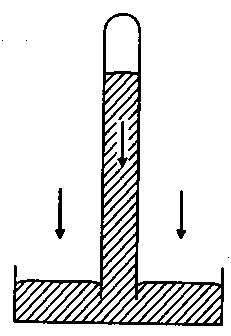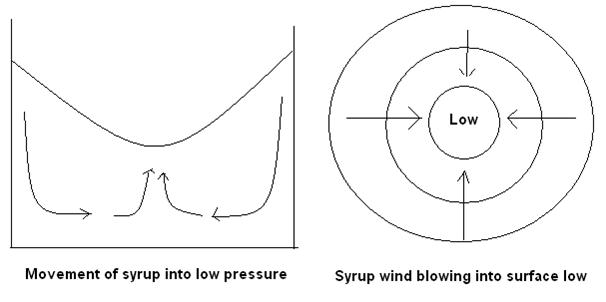About this page
Pressure differences create wind. But, why?
Related pages
Air pressure

A low pressure area is one where there is less weight of air above the barometer. A mercury barometer, as invented by Torricelli, in 1642 acts like a pair of scales with a column of mercury up a tube being balanced by a column of air.
Conversely, high pressure is where there is more air, a greater weight as shown by the barometer.
Why a pressure gradient causes air to move

Imagine a bowl of syrup with a hole scooped out of the middle. If we draw isobars of syrup pressure, we will get a low - as shown on the right. Then use intuitive reasoning.
The syrup in the centre will rise and that around the outside will descend. Again, using intuition, it can be seen that the syrup will move as shown by the arrows. Three lessons can be learned from this -
- The movement of syrup across the base of the bowl will be direct from high to low pressure.
- The deeper the hole, the steeper the pressure gradient and the stronger will be the syrup wind.
- Areas of low pressure are ones where the syrup is rising. High pressures are where it is descending.
So......
Because all fluids, gas or liquid, obey the same laws of physics, we can apply these ideas to air.
So, why does air blow nearly along the isobars rather than directly across them? See the page on the Coriolis effect. Also, see the pages on how pressure differences are created and how the sun heats the earth and atmosphere.
